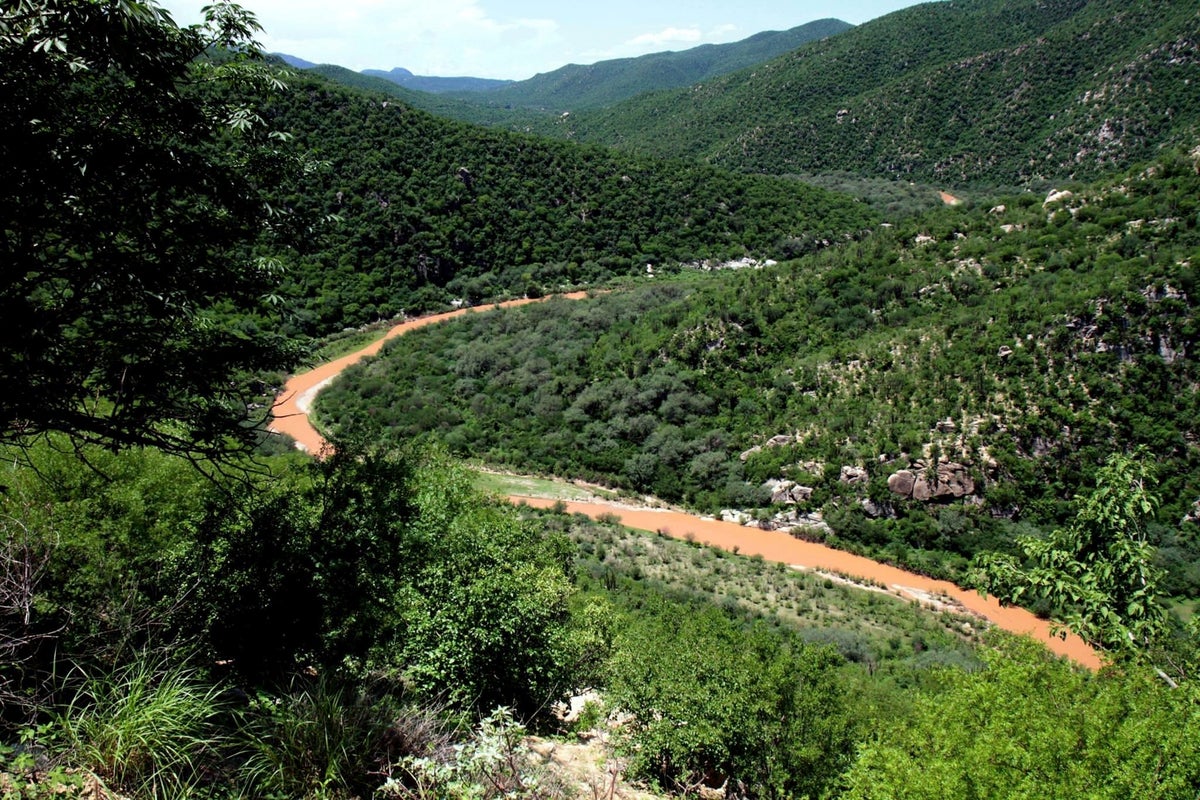
Nine years after a massive waste spill from a copper mine in the northern Mexican border state of Sonora, locals are still suffering from “alarming” levels of soil, air and water pollution, Mexico's Environment Department said Thursday.
Summarizing a 239-page report, officials also confirmed, using satellite images, that the spill was not solely caused by dramatic rainfall, as was initially reported, but by the “inadequate design” of a dam at Buenavista del Cobre mine, owned by the country’s largest copper producer, Grupo México.
Locals and environmental advocates say the report offers the clearest view yet of the catastrophic scale of the accident and, with it, new hope that Grupo México may finally be held financially accountable after almost a decade of legal battles and broken promises.
“We expect that, with this new document, we’ll have an easy path for getting the money,” said Luis Franco, a community coordinator with regional advocacy group PODER. “At the moment, I’m happy but at the same time I know this is just the beginning for the people of Sonora,” he said. “We have to keep fighting.”
On Aug. 6, 2014, after heavy rainfall, 10 million gallons (40 million liters) of acidified copper sulfate flooded from a waste reservoir at Buenavista mine into the Sonora and Bacanuchi rivers, just under 62 miles (100 kilometers) from the border city of Nogales, Sonora.
After the spill, Grupo México first agreed to give 1.2 billion pesos (about $68 million) to a recovery fund, but in 2017 that trust was closed and the remaining funds returned to the mining company, PODER claims. After a legal battle, the trust was reopened three years later but, said Franco, without any new funding.
Mexico’s environmental secretary María Luisa Albores González insisted Thursday during a news briefing that the report was solely “technical,” not “ideological,” but added that the trust would remain open until 2026.
“We in this institution do not accept said trust is closed,” said Albores González.
In another report earlier this year Mexico’s National Institute of Ecology and Climate Change calculated the total cost of the spill at over 20 billion pesos ($1.1 billion), more than 16 times the size of the original support fund.
“Under no circumstances” have locals been given enough money to recover, according to the report. “Neither the amount paid for the fine, nor the compensation given to the Sonora River Trust cover the direct, indirect or cumulative effects on the population, the ecosystem or the economy.”
The initial fund promised to open 36 water treatment stations and a toxicology clinic. But according to the Sonora River Basin Committees, a group of locals from the eight polluted townships, only one water station is open and the clinic has long been abandoned.
Unsafe levels of arsenic, lead and mercury have been recorded across over 250 square kilometers (94 square miles) around the spill. Across the Sonoran townships of Ures, Arizpe, Baviácora, Aconchi, Banamichi, Cananea, Huépac and San Felipe de Jesús, locals have complained of health risks and decreased productivity in their farms and ranches.
In what officials described as one of their most “alarming” findings, 93% of soil samples from the city of Cananea did not meet international requirements for arsenic levels.
Adrián Pedrozo Acuña, director general for the Mexican Institute for Water Technology, said the pollution had also impacted the region's drinking water. “The results presented here show very clearly that there is a safety or health problem in the water the population consumes,” he said.
Franco, who lives in the nearby city of Hermosillo, said this brings the most urgency for communities in which many cannot afford to buy bottled water.
Since the spill, Buenavista del Cobre has continued to operate — and grown in size. In the years immediately before the accident production increased threefold, according to Pedrozo. By 2020 it had grown half as big again, in what he described as “chronic overexploitation” of the area’s water supplies.
____
Follow AP’s climate coverage at: https://apnews.com/hub/climate-and-environment







